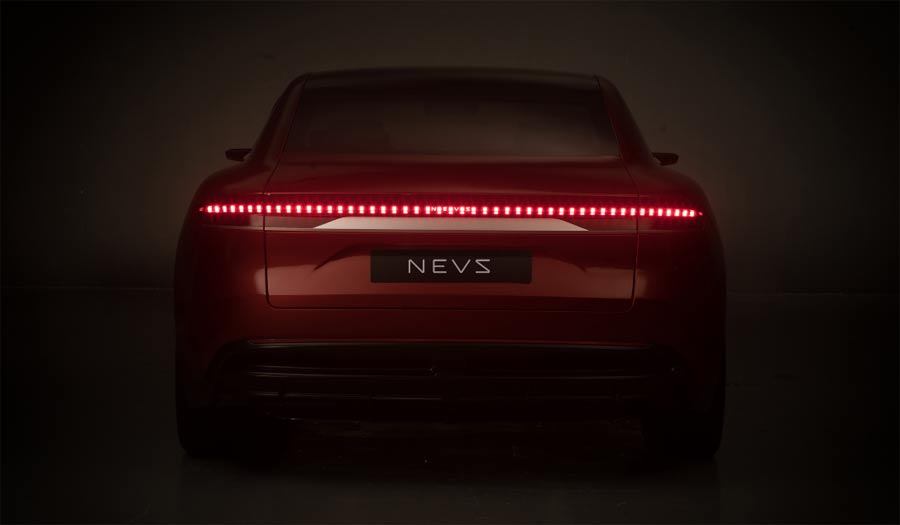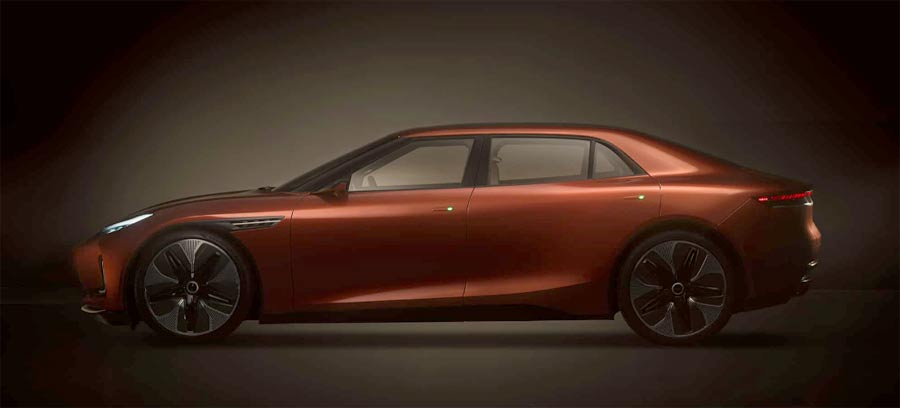Swedish company “Stenhaga Invest” has acquired the real estate and factory area of the former SAAB car factory in Trollhattan from NEVS, which has owned the property for the past 10 years. Stenhaga plans to rent out the space and resources within the factory to an automotive company for automobile production.
This deal is an important piece of the puzzle that strengthens the region’s economy and job market, according to Peter Eriksson (M), the Chairman of the Municipal Council. Discussions with potential tenants have already begun, and Stenhaga is eager to fill the empty spaces that the property offers.
Svante Andersson, who is also a part-owner of Västflyg, looks forward to the challenge and is aware that such investments require a lot of work. In an evaluation meeting with the Chairman of the Municipal Council Peter Eriksson, the representative of the opposition Paul Åkerlund, the Chief of Economic Development Helena Kortered, the Business Developer Magnus Larsson, and the City Director Said Niklund, Andersson explained that one of the major reasons he continues to invest in Trollhattan is the positive reception he has received from the municipality and the business unit. He further stated that he has worked with 40 municipalities over the years, and Trollhattan stands out positively.
Peter Eriksson sees the deal as very positive for Trollhattan, stating that the former SAAB car factory will have a proactive and stable owner who will create conditions for more businesses in the city and the area. The Chief of Economic Development, Helena Kortered, adds that the city is well-equipped for these types of collaborations and actively works across borders with establishment-promoting actors in the region to quickly meet the needs of the business community.
Table of Contents
NEVS will continue to own 20% of the resources
Nina Selander, CEO of NEVS, explains in a press release that they are pleased to see new life in the factory and that there is an opportunity for most employees to continue working in the new business. The deal means that Stenhaga acquires 80% of the property, while NEVS will own 20% to retain the possibility of car production and sales in Europe. The property consists of approximately 320,000 square meters of buildings and offices and about 800,000 square meters of land, as well as machinery and equipment.
The vast majority of the over 300,000 square meters of space currently sits vacant, but a few different actors are leasing parts of the property. Stenhaga is excited to fill the vacant spaces and to work with potential tenants to develop the area. The fact that NEVS retains a 20% stake in the property bodes well for the possibility of future car production in Trollhattan, which is the ultimate goal of both Stenhaga and the municipality.

Trollhattan has been hit hard by the decline of the car industry in recent years, and the purchase of this property represents a significant opportunity for the region to regain some of its economic footing. It is hoped that this deal will attract investment and stimulate the local economy, creating new jobs and opportunities for people in the area. The positive relationship between Stenhaga and the municipality will undoubtedly be a significant factor in achieving these goals.
Stenhaga’s previous experience with similar deals, combined with the positive reception from the municipality, gives reason for optimism regarding the future of the factory and the region. It will be exciting to see which automaker will ultimately decide to take advantage of this opportunity and revive the Trollhattan car industry. In any case, this deal represents a significant step forward for the region and the local economy.
NEVS Retains 20% Ownership in Former SAAB Car Factory: Hinting at Possible Future for Emily GT Electric Car
There is still a chance that NEVS will launch the production of the NEVS Emily GT electric car, which was unveiled last week, if the company sells the entire project to a buyer or partners with an interested company.
The decision by NEVS to retain 20% ownership of the former SAAB car factory in Trollhattan, despite selling the majority of the property to Stenhaga Invest, has sparked speculation about the future of the NEVS Emily GT electric car. The car, which was unveiled last week, has generated excitement among both industry experts and SAAB enthusiasts, who see it as a possible successor to the iconic SAAB automobiles.
NEVS CEO Nina Selander expressed her satisfaction with the sale, noting that the deal will breathe new life into the factory and provide an opportunity for many of the current employees to continue working in the automotive industry. However, the fact that NEVS retains a stake in the property has led many to believe that the company still harbors hopes for the Emily GT project.
A few facts from Emily GT project
The Emily GT has been described as a sleek and stylish electric car with impressive performance capabilities.The car is also equipped with advanced self-driving features, making it a potential competitor to other high-end electric vehicles like the Tesla Model S and the Lucid Air.
NEVS Emily GT is an electric vehicle designed by Saab engineers that has caught the attention of the automotive industry due to its revolutionary technology and impressive range. The vehicle is powered by four 120-hp electric motors, which provide a total of 480 hp. This technology, along with an updated version of the vehicle, is expected to offer 653 hp and 2,200 Nm of torque, resulting in a 0 to 60 mph time of just 3.2 seconds.

The Emily GT is equipped with in-wheel motor technology, which places an electric motor in each wheel, resulting in the conversion of electrical to mechanical energy without the need for gears. This unique technology significantly improves the vehicle’s efficiency, making it more energy-efficient than traditional electric cars with two electric motors for four-wheel drive. The in-wheel motor technology also provides the vehicle with a unique balance and driving experience, with a spacious interior and more room for the battery than conventional electric cars.
The Emily GT has an impressive range of over 1,000 km
Thanks to the spacious interior, NEVS has been able to include a 175 kWh battery, which gives the Emily GT an impressive range of over 1,000 km. This feature has made the vehicle attractive to potential buyers who are looking for an electric car with a long-range capability. Additionally, the Emily GT has received positive feedback from automotive experts and Saab enthusiasts who see it as a continuation of the Saab legacy.
In conclusion, the NEVS Emily GT is a revolutionary electric vehicle that has set itself apart from its competitors with its in-wheel motor technology and impressive range. With the potential for even greater horsepower and torque in future models, it has the potential to become a game-changer in the electric vehicle market.
Whether the Emily GT will ultimately see the light of day
While it remains to be seen whether the Emily GT will ultimately see the light of day, the fact that NEVS has retained a stake in the former SAAB factory suggests that the company still believes in the project’s potential. With Stenhaga Invest now in possession of the property, there may be an opportunity for a partnership between the two companies, potentially leading to the revival of the Trollhattan car industry.

In any case, the interest generated by the Emily GT project and the sale of the former SAAB factory to Stenhaga Invest bode well for the future of the automotive industry in Trollhattan. The region has been hit hard by the decline of the car industry in recent years, and the purchase of the property represents a significant opportunity to attract investment, create new jobs, and stimulate the local economy. Whether the Emily GT plays a role in this resurgence remains to be seen, but its potential as a high-end electric vehicle has certainly captured the attention of industry experts and enthusiasts alike.
About Svante Andersson and Stenhaga Invest
A leading real estate company with 70 subsidiaries across 11 countries, owned by Svante Andersson with over 30 years of industry experience and an extensive network. Stenhaga has a proven track record of acquiring and filling vacant properties with both internal and external tenants.











Fingers crossed
carup.se/nye-agaren-avslojar-saab-fabriken-kan-tillverka-bilar-igen/
SAAB for life! Come on… 🤞
Like many Saab enthousiastes, we really would like to see this project to be industrialized. If an interested buyer shows up, it could be imagined that a consortium of « Saabist’s » could be set up and be also a partner for this venture. At least myself I would be ready to join just a formula.
Nils
Industrial design engineer